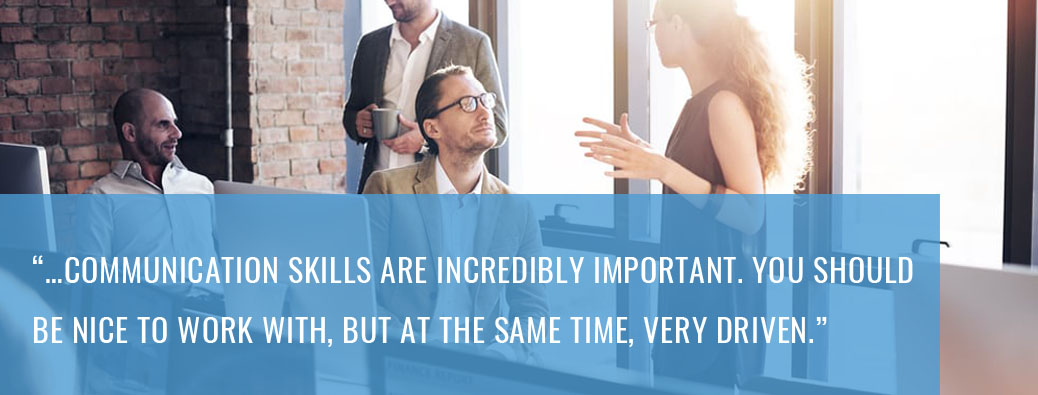Improving Product Leadership
with Pendo's Brian Crofts



Recently Mainsail hosted a product webinar with Brian Crofts, Pendo’s Chief Product Officer. Pendo is a product analytics tool, so as Brian put it, his job is a little “meta”: he’s a product leader whose customers are also product leaders. It’s fitting, then, that he spoke with us about product leadership (check out the webinar recording below). After his talk on how product teams can be customer-backed and data-driven, there was still time for a few questions from Kate Hopkins, Mainsail’s Director of Product.
Kate Hopkins: How do you balance spending time understanding customers, and actually developing the product?
Brian Crofts: It’s a great question and it’s actually very difficult. I like to stay in close contact with customers on a weekly basis, and that comes in many different forms. One of the easiest forms is to simply jump on a customer call with your sales team when they are talking with prospects, so you can hear what they need, what they’re struggling with, and what is missing in the market. On the flip side, you can join a call with your client success team to hear about product problems and how the product isn’t addressing specific pains. Within an hour of calls, you can feel connected to your customers. If you’re looking to do a bigger initiative and discover meaningful innovation, that’s when you need to prioritize the time to get out of the office.
Kate: How can you accurately estimate timelines and stay on track for executive and board-level business priorities, but still have an agile development process?
Brian: I am experiencing this dichotomy right now because I have a portfolio of products, ideas and features we’re working on. Some of these things can float without a hard deadline, and others require a commitment from the team because not addressing them will block sales while addressing them will accelerate sales and innovation. To help us get started, we often pick one project to spec out through an entire quarter and ask engineering to estimate how much investment and time it will take. Then, we rally around that timeline. That waterfall approach becomes agile when we receive new data and insights about the market or customer and we allow ourselves to tweak the product, even if it extends the timeline. In general, I would say: don’t be a purist. There are occasions when you need to spend time spec-ing things out, and there are times when you can be purely agile. Be flexible and know there will always be a blend and a trade-off.
Kate: What kind of product marketing goes into achieving a successful launch and maintaining product engagement?
Brian: I like to separate when we ship stuff and when we launch stuff. When we ship stuff—potentially to a small group of customers to get their feedback—product management is responsible. They coordinate with sales, engineering, and client success to know everything about what the product does and why. Product marketing comes in to work on the actual launch. What is the messaging? What’s the campaign? How do we want to promote it? Product marketing needs to be included in a lot of conversations with product management so they can hear “the why” behind what we’re building. In turn, they can produce accurate and compelling benefit-messaging that will resonate with customers.
Kate: A key skill for product managers is being able to lead without authority. And it’s a tricky one. Do you have any tips on how to do that effectively?
Brian: Let’s say you’re a product manager or a product owner and you’re running a scrum team. Your sphere of control is almost nothing, meaning you have no direct reports. But your sphere of influence is huge, meaning as soon as you step into the role, you are a leader of people because you are determining what should be built. You need to understand how to take feedback on the product and put it into a framework or a strategy so that you’re running the show. And that requires leadership and influence. That’s where communication skills are incredibly important. You should be nice to work with, but at the same time, very driven.


Kate: Thinking of new product managers, what makes a great hire? What are you looking for in terms of background or skillset?
Brian: The biggest thing I’m looking for is natural curiosity. Especially with an early product manager, I ask: are they absolutely motivated and driven to build solutions that win for customers? And all I need to do is put guardrails around their excitement? Or, do I need to light a fire under them to get them going? (I am so not interested in lighting a fire under somebody.) And then of course do they have the soft skills? Are they natural leaders? Do they have the ability to influence? Or the ability to make decisions without perfect data? Can they rely on intuition, data insights and customer feedback and make decisions quickly?
Kate: Aside from Pendo, what types of product tools do you use?
Brian: I use anything that can help me prototype quickly and get ideas out in front of customers. I use several apps on my iPad, like Sketch, to get ideas on the table and then I use Invision to get prototypes out in front of customers. I believe communication is one of the most underrated, under-thought-about areas of product management, so whether its Google Documents, Confluence, Jira—we need to be able to use tools to communicate why we’re doing something, how we’re doing something, and the direction it’s going. When I think about it, communication tools are the most important tools I use.

